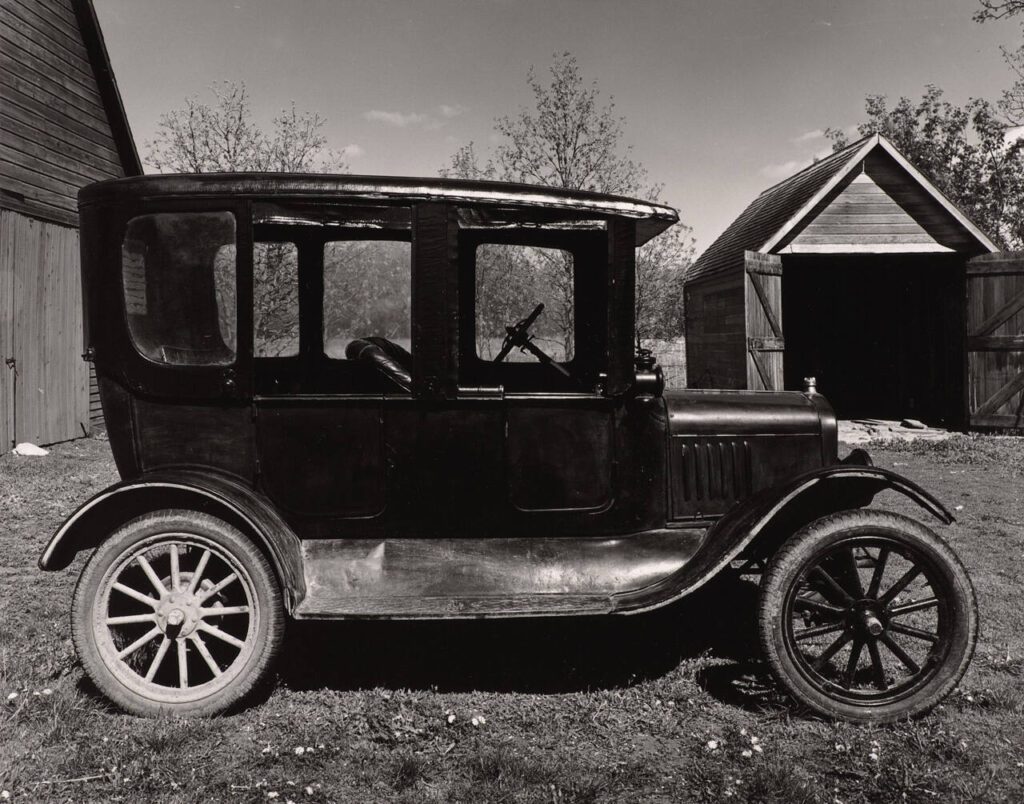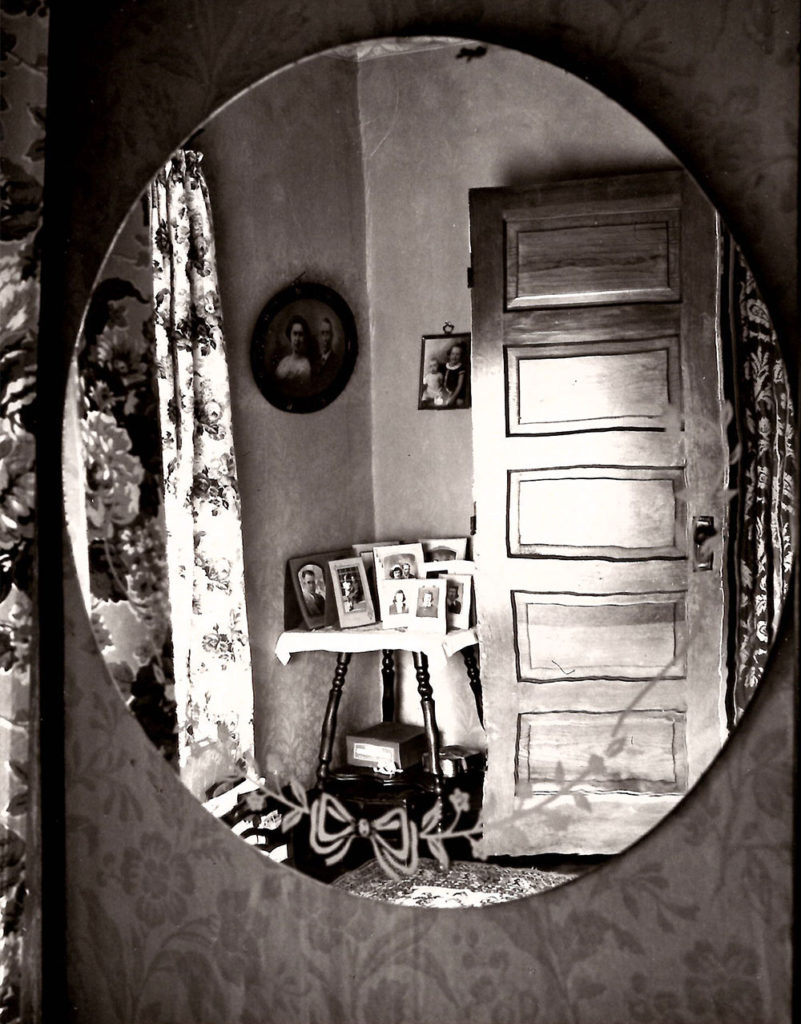Wright Morris
Wright Morris (1910–1998) was an American writer and photographer whose visual work quietly chronicled the landscapes and lives of the Great Plains. Born in Central City, Nebraska, he studied journalism at the University of Nebraska before moving to New York, where he began publishing short stories and essays. In the 1940s, Morris supplemented his writing career by taking black‑and‑white photographs of rural homesteads, farm machinery, and family portraits, creating a parallel body of work that documented both the built environment and the human communities of his native region.
Morris’s photographic style is characterized by careful composition and a focus on ordinary details—a weathered fence post, the play of light on a barn’s siding, the expressions of subjects posed in front of their homes. He often paired his images with brief written vignettes, a practice that anticipated later photo‑essay formats and underscored his belief in the interplay between word and image. His photographs appeared alongside his award‑winning novels, such as The Home Place, reinforcing his reputation as a storyteller equally comfortable with text and frame.
Later in life, Morris taught creative writing and photography workshops at universities including the University of California, Irvine, and his work was exhibited at venues like the Smithsonian Institution. His photographic archive, now housed at the Beinecke Rare Book and Manuscript Library at Yale, remains an invaluable record of mid‑century American rural life—and a testament to a career that bridged literature and visual art.



